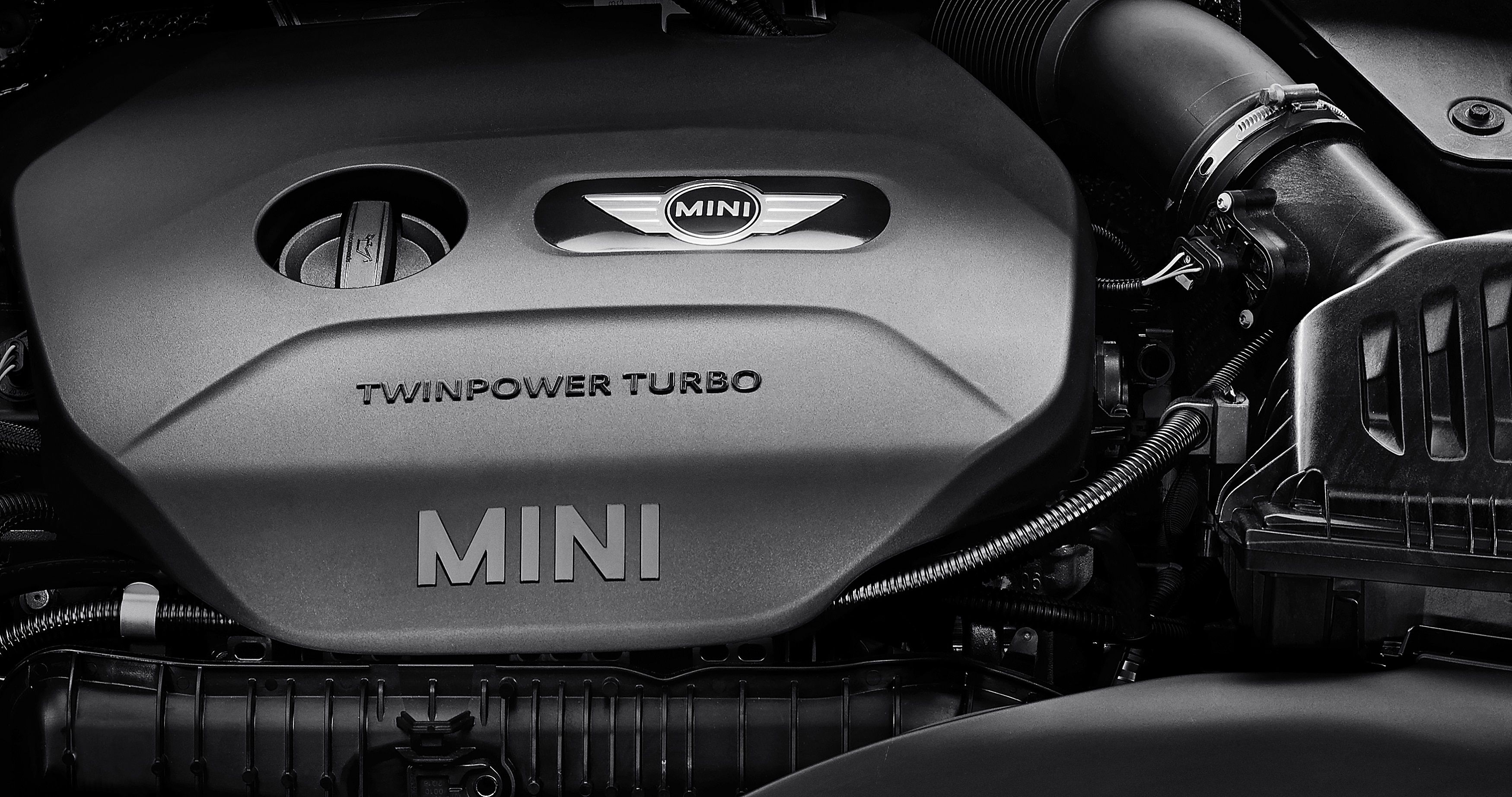We've seen plenty of spy shots of the 2014 Mini Cooper, and we've even seen leaked imaged. Heck, we even had Mini->ke629 officials complaining that leaked images didn't represent the newly redesigned models properly. Well, Mini is now starting the flow of next-gen information by releasing a very in-depth presser that outlines the chassis, engine and safety updates to the soon-to-be-revealed models.
This press release, which dropped late last night, confirms that the new Mini models will feature three- and four-cylinder powerplants, ranging from a petite 1.5-liter, three-banger up to a 2.0-liter, four-pot that nearly reaches the 200-horsepower mark. Along with these new engines will comes an all-new driveline that will help deliver increase fuel economy across the range.
The chassis will also get some nice refinements that will offer up precision handling and a comfortable ride all at the same time.
Click past the jump to read more about the next-gen Mini technology
Drivetrain Updates
Thanks to the addition of Mini (BMW) TwinPower Turbo technology and BMW's VALVETRONIC system, the Mini lineup will not only be more powerful, but also more efficient. These engines all feature an aluminum crankshaft housing to help reduce weight and increase strength, a forged-steel crankshaft with optimized balancing, and weight-optimized pistons for better handling of higher engine speeds.
When the new line of Mini models hit the market, there will be two new engines. The smallest of the group will be a 1.5-liter, three-cylinder TwinPower Turbo, gasoline-powered engine with 136 horsepower and 220 Nm (162 pound-feet) of torque at just 1,250 rpm. With overboost, this three-pot jumps to 230 Nm (170 pound-feet). Topping out the gasoline-powered models will be a 2.0-liter four-cylinder with 192 horsepower and 290 Nm (214 pound-feet) of torque -- 300 Nm (221 pound-feet) with overboost.
The next-gen Mini models will also gain a new diesel engine, in the form of a 1.5-liter, three-cylinder engine with 116 horsepower and 270 Nm (199 pound-feet) of torque.
A new manual gearbox will check in on next-gen Minis that features a rev-match system to blip the throttle when shifting gears, giving the model a sportier shift. A new automatic transmission comes with a start/stop feature to help increase fuel economy. For buyers that check both the autobox and navi options also get a system that adapts gear selection to the current route, according to information that it collects from the navi system. Coming to a hairpin corner? The transmission will select the perfect gear for the corner.
Chassis Updates
Thanks to its tie-in with Bimmer->ke178, Mini has long led the compact->ke140 class in handling and ride quality, but it will further enhance the chassis in 2014. Mini will continue to use its single-spring strut front and multi-link rear suspension systems, but it will now offer up a new strut system that uncouples the struts from the body. This helps reduce unsprung weight and increase axial movement for enhanced handling.
The big update in the suspension system is the addition of adjustable dampers -- a first for Mini. Drivers can choose between a sporty setting and a balanced setting, depending on his preferences. This system makes use of electronically controlled valves to adjust the firmness of the suspension.
A new electromechanical power steering (EPS) system offers up speed-dependant support that requires less force to turn at a stop and more precision when turning at higher speed. This system also allows for the future addition of a parking assist feature, making parking this micro-machine even easier.
The brake system on next-gen Mini models will feature tuning for each model, and less of a generic feel across the lineup. Additionally, Mini models will feature lighter braking components, which lowers unsprung weight and thereby increases handling capabilities. Mini will also add in better cooling for the braking system, helping reduce brake fade.
Safety Updates
Minis will be safer than ever in the upcoming model year, as Mini is adding in high-strength, multi-phase steel , micro-alloyed steels and tailored welds. These updates also lower the overall weight of the Mini lineup, which has the biproduct of increased performance and better fuel economy.

